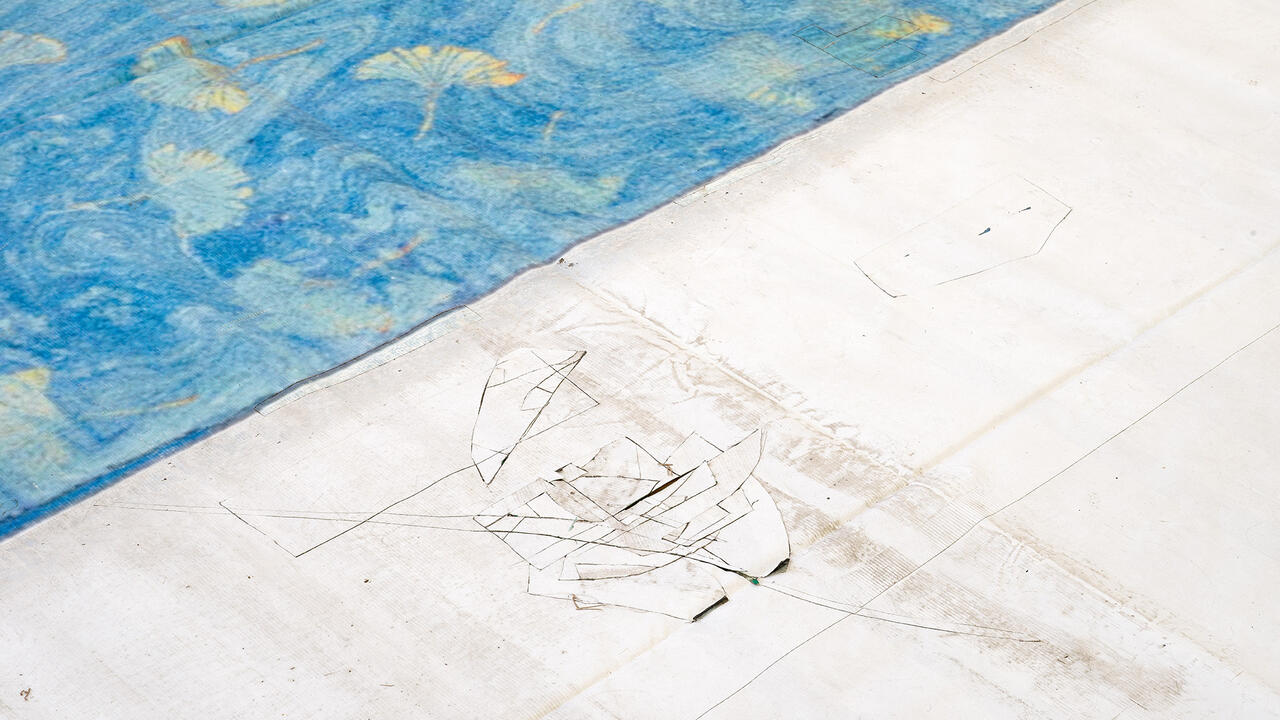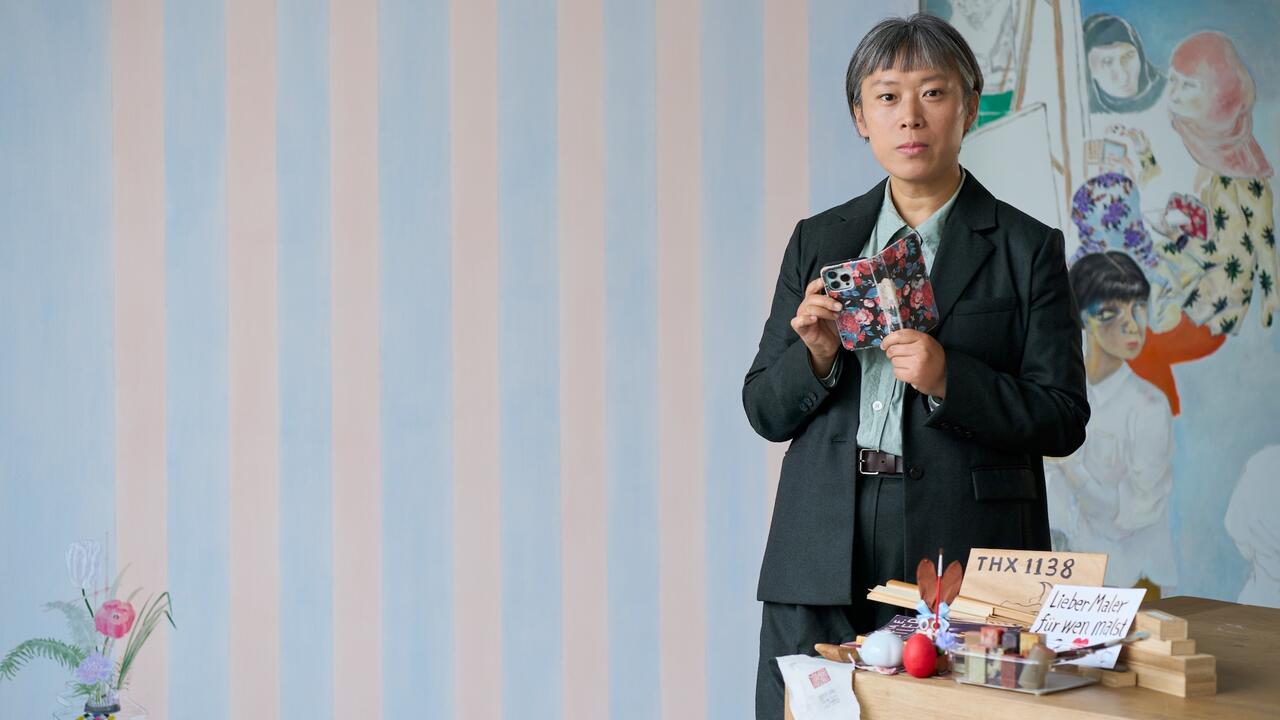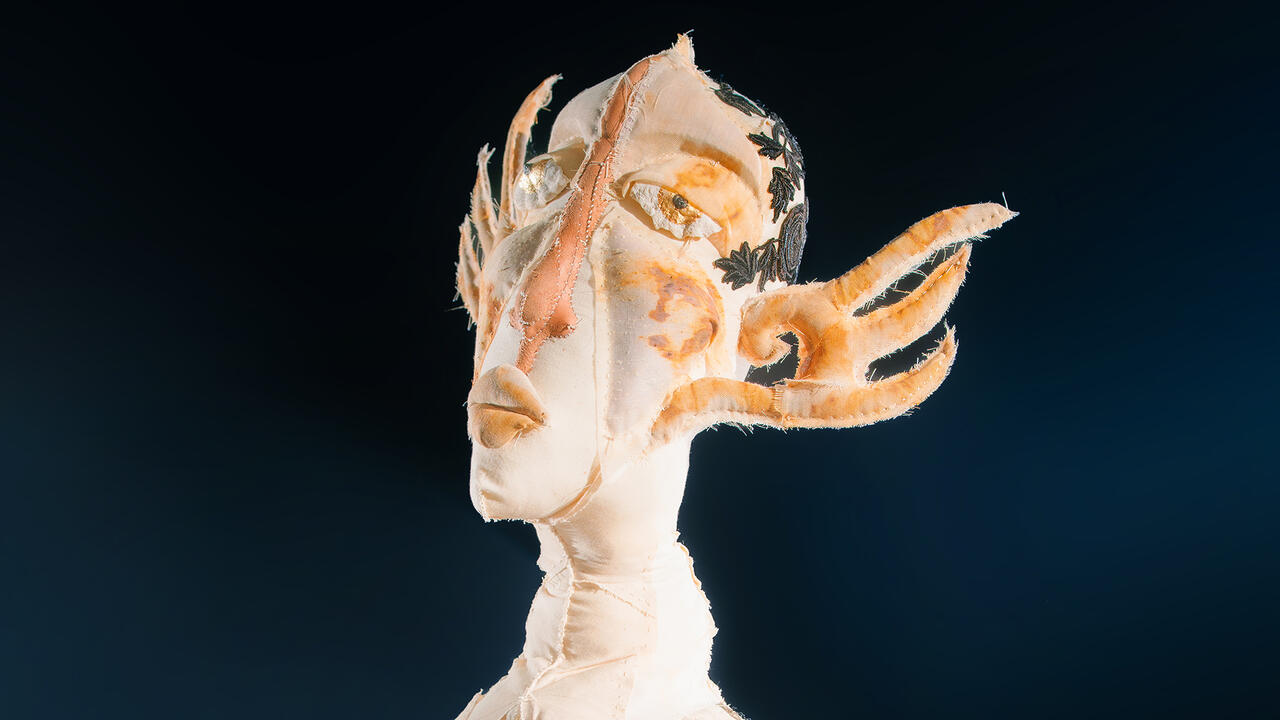Who Loves the Sun?
Since the early 1960s, Jonas Mekas has been documenting his life on film, creating a personal testament to friendship, exile and the flow of history
Since the early 1960s, Jonas Mekas has been documenting his life on film, creating a personal testament to friendship, exile and the flow of history
Before last summer Jonas Mekas was simply a name I had come across in accounts of 1960s New York. Andy Warhol, for example, credits Mekas in his book Popism (1980) as someone who got him into film and who organized the underground cinema screenings at which many of Warhol’s movies were premièred. I had never seen a film by Mekas, however, so when I heard that the Lithuanian pavilion at the Venice Biennale last year was showing a retrospective of his work I was curious to see it. Still joking about the formulaic sensualism of the Arsenale exhibition, my friends and I made our way into the pavilion and were instantly transfixed. We watched for an hour or so in silence, fully absorbed by the radiant images of the film shown on the main screen, As I moved ahead occasionally I saw brief glimpses of beauty (2000). The work is a stream of images of life Mekas shot on 16mm – portraits of friends, family, cats, children, nature and New York; snow, puddles of rain or sun so intense that all colours are bleached and the image dissolves in white light; people on the street in New York, friends talking, spending lazy days in the park or on the beach, making food or films, Fluxus or Pop Art; intimate moments of love, a marriage, the birth of two children and glimpses of them growing up. As you watch the film you begin to realize that it covers more than two decades, roughly from the late 1960s to the early 1980s. At intervals the flow of images is punctuated by typewritten sheets of paper filmed in close-up, inscribed with words such as ‘Beauty of the autumn in New York’ or ‘Ecstasy of summer and being in New York’ or ‘Meanwhile uptown’ and, again and again, ‘Life goes on’.
Mekas cherishes the music of Frederic Chopin and often uses it to accompany his films, along with more discordant sounds, improvisations on the piano, the drone of the early Velvet Underground or Mekas himself playing folk songs on an accordion. Very occasionally there might be aural snatches of everyday life from the street or a home, such as a child practising the violin. Time and again, usually towards the beginning of a new chapter and film reel, the voice of Mekas addresses the audience like a host welcoming his guests: ‘My dear viewers …’ or ‘Eh, my friends, the springs and the summers of New York … I don’t think you believe me. (laughs). But I tell you, it is beautiful in New York in the Spring.’ Mekas’ voice is characterised by a very particular timbre. It is always slightly raised but never dramatic; his enthusiasm and exuberance is accompanied by a gentle, self-reflective irony and occasional joyful mockery about the theatricality of it all. As he speaks, he draws out words and repeats them as if each one has a special quality that can only be experienced if you keep it on your tongue long enough. As when he praises the summer, his voice-over may introduce or amplify the atmosphere of the images that follow, such as: ‘Nothing extraordinary has so far happened in this movie … let’s continue and see, maybe something will happen, maybe … if nothing happens, let’s continue anyway, that’s how life is.’ On the whole, the images don’t match the narration and music in any obvious or illustrative way, although they do occasionally come together. We see, for instance, Mekas’ child learning to walk, or rather to run, and excitedly scurrying down the length of a loft to the Velvet Underground’s song Run, Run, Run. Just as the agitated rhythm picks up speed, the music stops; there is silence while the child continues to run and then you hear Mekas ask: ‘what happens during the silences?’ This is followed by an interlude of quiet as we watch the child, until suddenly Run, Run, Run kicks back in.
The film comprises many such moments recorded in countless short takes. The length of each one seems measured by the time the image needs to compose itself in front of the camera; this can be a few frames or 20 seconds, but never more, before Mekas cuts or pans away with a dizzy spinning motion of his hand-held Bolex camera. Quite a lot of takes are shot with even fewer frames per second, so the images look disjointed, although the pace is never hectic. On the contrary, the syncopated rhythm of the cuts and pans create a surprisingly relaxed flow. This particular sense of surprise stays with you the more of Mekas’ films you see. Amazed, you realise that you have just seen over four hours of scattered fragments of film (As I moved ahead ... is 288 minutes long) and experienced it easily as visual continuum.
Another distinctive characteristic of how Mekas works is the way in which he challenges his own control over the image. Some frames are obviously shot from the hip without Mekas checking the image through the viewfinder. In many sequences it seems that the succession of takes was not decided on the editing table but in the camera. You might expect footage generated this way to look random, but it doesn’t. It gives you a paradoxical sense of indefinite definiteness. In the film, any image (of, say, a flower, face or puddle of rain) is there only to be replaced by another image (of a flower, face or puddle of rain). Yet, every image is where and what it must be and as specific and real as an image can ever be.
These moments of continuous discontinuity and definite indefiniteness make you experience the innumerable glimpses of everyday life as one sustained moment of ecstasy. The film becomes a glowing flickering thing that talks to you while remaining a self-contained luminescent audio-visual reality of its own. In the words of Gilles Deleuze you might call it a plane of immanence.1 And this intense, indefinite state of immanence, Deleuze writes, with Baruch Spinoza and David Hume in mind, is what life is: ‘A life is everywhere, in all the moments that a given living subject goes through.’2; moments that together form a ‘world of multi-coloured patterns and non-totalizable fragments.’3 Mekas’ films articulate a similar view of life. They may document how one particular person sees and lives life. But in terms of the ways in which this way of seeing then materialises itself on celluloid in self-contained sequences of concrete images and sounds, it also becomes abstract and impersonal. It is a way of seeing, a life, a reality made up of images and sounds.
This is also the reason, it struck me, why the experience of watching all of these scenes of bliss, love and friendship with illustrious New York bohemians remains untainted by envy or jealousy. It is because Mekas does not declare this happiness and beauty his private property. In the process of telling his own life he, in a sense, disowns it, by releasing it into the world and by putting it into images and sounds that can potentially be experienced by everyone. More than once Mekas inserts the text ‘this is a political film’ into scenes of happiness among friends and family. From a Marxist point of view nothing is more radical than renouncing personal happiness as private capital and treating it as something that exists for all.
Born in Semeniskiai in Lithuania in 1922, Mekas published his first collection of poetry at the age of 14. After Lithuania was invaded by Germany, Mekas worked on an underground newspaper critical of both the Nazis and the Soviets, was persecuted by the German secret police and tried to flee the country together with his brother Adolfas (they were both unable to return to Lithuania for years after the war because the Soviet authorities were also after them). Their plan to escape to Vienna was thwarted and they were detained in a forced labour camp near Hamburg until 1945. Mekas then lived in displaced person camps in Germany and studied philosophy in Mainz before the camps were dissolved in 1949 and he and his brother emigrated to New York. With day jobs in factories, Mekas began to immerse himself in cinema and screen underground films at different venues in 1953, launched the magazine Film Culture in 1954 and started writing a weekly column for the Village Voice in 1958. In 1962 he was among the founding members of the Filmmakers’ Cooperative, a distribution system that still remains in operation, with one of the world’s largest collections of avant-garde film. Mekas continued to organize screenings for the Filmmakers’ Cinémathèque which he founded in 1964 and which in 1972 grew into the Anthology Film Archives, dedicated to the presentation, and increasingly the preservation, of avant-garde films. Along with running the Archives he continues to curate film programs and teach at different universities.
Similar to the ways directors of the French New Wave prepared the public for the reception of their films by writing for the magazine Cahiers du Cinèma, Mekas’ creativity lies as much in the making of film as in the construction of a discourse of avant-garde cinema that allows these films to emerge. It is characteristic of a political life that it is bound to produce friends as well as enemies. Browsing through Mekas’ Village Voice columns you feel how his beautifully empathic writing about filmmakers such as Kenneth Anger, Jack Smith, Stan Brakhage and Hollis Frampton, video art by Joan Jonas and Nam June Paik, or food and music will have earned him many friends. But it is safe to assume that as a result of the fierce attacks he launched against filmmakers, film institutions and critics Mekas deemed ignorant of what cinema is essentially about, he must have made many enemies. He sums up his position: ‘I am not an objective man at all. I take my stands and I stick to my stands.’4
Imagining this personal history, however, also brings you back to the biographies and filmographies of the people who have been, or still are, part of Mekas’ life: his wife, Hollis Melton; his brother, Adolfas Mekas, who is also a filmmaker, as well as other filmmakers from his circle of friends such as P. Adams Sitney, Peter Kubelka, Marie Menken, Gregory Markopoulos or Barbara Rubin. To delineate such personal histories by simply recounting dates and facts, however, feels somewhat trivial in relation to an œuvre such as Mekas’, which persistently raises questions of what it means to write history and represent a life.
For Mekas, history is not a linear account of events but the experience of continuously working through, selecting and linking memories in very specific ways. He works backwards in time and returns to the present in a looping motion. Spliced together in that same peculiar definitely indefinite, continuously discontinuous way as As I moved ahead … his first film diary Walden (Diaries, Notes, and Sketches) was premiered in 1969 and brings together three hours of footage from the immediate past, the years from 1965 to 1968. In 1976 Mekas took the story further back into the past with Lost, Lost, Lost (Diaries, Notes, and Sketches) based on footage from the years 1949 until 1963, but this time edited with a time difference of up to two decades.
In the ongoing process of producing diaristic films, Mekas shifts footage from the place it may have found in one film to new contexts in the edit of other films. Footage, for instance, from a summer Mekas spent at the seaside tutoring Jackie Kennedy’s children about film – including shots of visits from Warhol – first appear briefly in He Stands in a Desert Counting the Seconds of His Life (1985), then return in greater length in Scenes from the Life of Andy Warhol (1990) and finally figure prominently in This Side of Paradise (1999). The sense of history this creates is complex. Certainly, Mekas captures the historical momentum of situations, like, for instance, the first public appearance of the Velvet Underground in 1966, but a historical momentum never consumes his films. The re-use and displacement of footage disconnects particular images from particular times and ties them more strongly into the independent cosmology and fluid sense of history in Mekas’ work as a whole. In He Stands … for instance, I only realized in retrospect that the man I had just seen lovingly explaining his video camera to a group of children, was actually Warhol. So thoroughly had he become part of Mekas’ vision of family life, that he bore little resemblance to the Warhol we have come to know from the context of his own Factory and the momentum of the 1960s.
From this translation into Mekas’ visual language another Warhol emerges, a displaced person who lives on the margins of American reality and creates his own America – like Mekas and another friend of his, Fluxus pioneer and fellow Lithuanian émigré George Macunias, whose life, art and death from cancer Mekas commemorates in Zefiro Torna or Scenes from the Life of George Maciunas (1992), a film that floods your senses with emotion like no other. The invention of this other America from the vantage point of a displaced person is, in fact, one of the overreaching narratives that you can see running through Mekas’ films. Lost, Lost, Lost speaks of the pain of displacement as much as it voices rage about a small country, Lithuania, being invaded and then sold off on the conference table of Yalta by the big countries. Mekas records his solitude in New York together with the political rallies and Sunday gatherings over picnics in the park of the Lithuanian émigré community. Towards the end of the film, Mekas, however, confesses to a deep frustration with the way this community is grounded in the invocation of an irretrievable past and announces a break. From then on the Sundays in the park become the site for the emergence of another community, one of international bohemian friends, and then of a family. Diaspora becomes home, yet the home that was lost is never forgotten. In Mekas’ films the mourning of a lost past is inextricably connected to the joy of living in the present moment.
In this process many images and signs shift their meaning. In the beginning of Lost, Lost, Lost, for instance, the phrase ‘life goes on’ is uttered to accuse a society that proceeds with business as usual as if an atrocious war hasn’t happened, and as if those who bear the mark of that war were not still walking amongst us. In the films that cover the years to come, the meaning of the phrase changes fundamentally as it comes to express both Mekas’ efforts to create a new life and experience the joy of realising that it is possible to live that life and let it continue. Other words change their meaning, too. In the voice-over of Lost, Lost, Lost Mekas describes his film as ‘some images and some sounds from someone in exile.’ In As I moved ahead … he summarizes: ‘Here I am, myself and cats and my images and my sounds … I’m just doing my work. This is my little workshop here … stacked with films’. In shifts like these, from some to my, you can sense the incredible investment it takes to understand a life as yours and the courage it takes to allow
yourself to be happy and mourn the past.
In this sense also the recurring text ‘this is a political film’ becomes meaningful again as it emphasizes the political act of claiming and creating the possibility of happiness and mourning within a society and history that has denied you that chance. But such linear narratives remain unstable. After all the history of Lost, Lost, Lost is projected from the position of a new history that has already become a past in Walden which today may be approached and reconstructed only through As I moved ahead. Everything keeps moving. Mekas lives with these histories, images, sounds and words as he lives with the generations of cats that populate his films. It is a form of conviviality which is intimate and sensual but in which the films, like cats, irrespectively live a life of their own.
Jan Verwoert is contributing editor of frieze. Although based in Berlin he teaches at the Academy of Fine Arts Umeå and the Piet Zwart Institute Rotterdam. He would like to thank the Arsenal Filmarchiv and Filmmuseum in Berlin for allowing him to view their copies of Mekas’ films and in particular Birgit Kohler from the Arsenal for helping him with press material including clippings from the Village Voice.
1 Gilles Deleuze: Pure Immanence – Essays on A Life. Zone Books, New York 2001, p.26
2 Ibid., p.29
3 Ibid., p.38
4 Jonas Mekas: Movie Journal: The Rise of a New American Cinema, 1959–1971, Macmillan, New York, 1972













